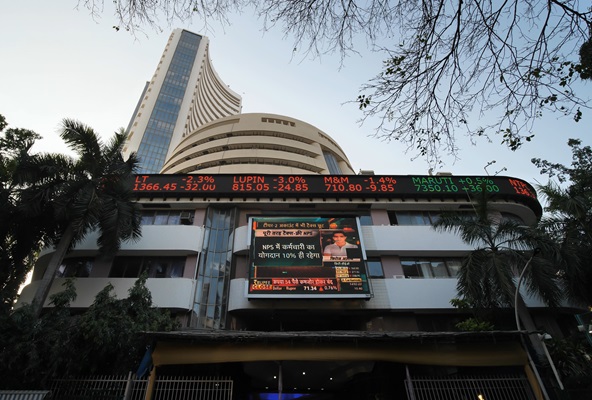.png)

Manoj Rane, who headed treasury at various foreign and domestic banks, was vice chair of FIMMDA and FEDAI. He is now an independent director advising finance firms.
May 22, 2025 at 7:33 AM IST
Foreign portfolio investors have returned to Indian equities, triggering a wave of optimism in the markets. But before breaking out the confetti, it’s worth asking: are they here for India, or merely fleeing elsewhere?
After offloading over $22 billion worth of Indian equities between October and January—primarily in the favour of the United States—FPIs have reversed course, pouring in nearly $4 billion across April and May. The turn coincided with the Sensex touching a one-year low of 71500 points in April. Since then, the index has surged, inching back toward the highs scaled last year. Yet, this rally has been narrow, driven almost exclusively by large caps, with mid- and small-cap stocks still lagging. That in itself is telling.
When it comes to short and sharp market swings, FPIs call the shots. They remain a major class of investors in Indian equities. But for the first time in 22 years, domestic institutional investors overtook FPIs in ownership on the National Stock Exchange—17.62% versus 17.22%—at least for the March quarter. This reversal underlines both the growing confidence of Indian investors and the waning conviction of overseas funds, whose India holdings have shrunk significantly from the 20.7% they commanded a decade ago. It’s a subtle but meaningful shift in power.
Trend Drivers
That FPI flows influence markets is obvious. What’s less understood is what drives them. We often look to the usual suspects: GDP growth, geopolitical risk, regulatory changes, corporate earnings. But an equally powerful force lies elsewhere, one largely ignored by domestic investors: the US Dollar index.
Consider the past nine months. From a peak of 86000 points last September, the Sensex fell to 72000 points in January before rebounding to over 82000 points in May. Overlay that with the DXY: it rose from 100 in August 2024 to 109.9 in January 2025, then declined back to 100 by May. The correlation is hard to dismiss.
The implication? FPIs tend to sell Indian equities when the dollar strengthens, and re-enter when it weakens. This seems counterintuitive. When the dollar is strong, and the rupee is weak (hovering around 87–88 per USD earlier this year), FPIs would presumably repatriate less in USD terms than they originally invested—unless their capital gains were outsized. So why do it?
The answer lies in strategy. FPI allocation is often less about India’s promise than the US’ problems. The recent weakening of the dollar has come amid growing concerns over America’s economic direction post-election—debt levels, sluggish corporate earnings, and political uncertainty. That has prompted a global reallocation of capital, and India, with its relative stability and liquidity, becomes a logical parking spot.
In other words, the Indian market is not Plan A. It is Plan B.
Missing Links
This raises deeper questions. Are we misreading the intent behind FPI flows? Is the domestic market building a narrative of “returning global confidence” when in fact it is simply a bystander in a much larger global play? This matters, because if FPIs are being driven primarily by external compulsions, not Indian fundamentals, then the current rally may not be as durable as it appears.
The other point to consider is the domestic currency. If the rupee begins to strengthen against the dollar, will that trigger outflows?
FPI flows are fickle. They have always been. But what’s currently evident is that they are more responsive to movements in Washington than in Mumbai. And so long as that remains true, Indian investors must temper their excitement with realism. Foreign flows are not validation. At best, they are endorsement by default.
It’s worth asking again: are FPIs truly bullish on India, or just briefly bearish on the rest?




